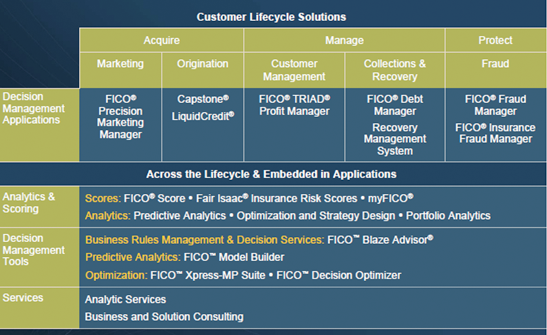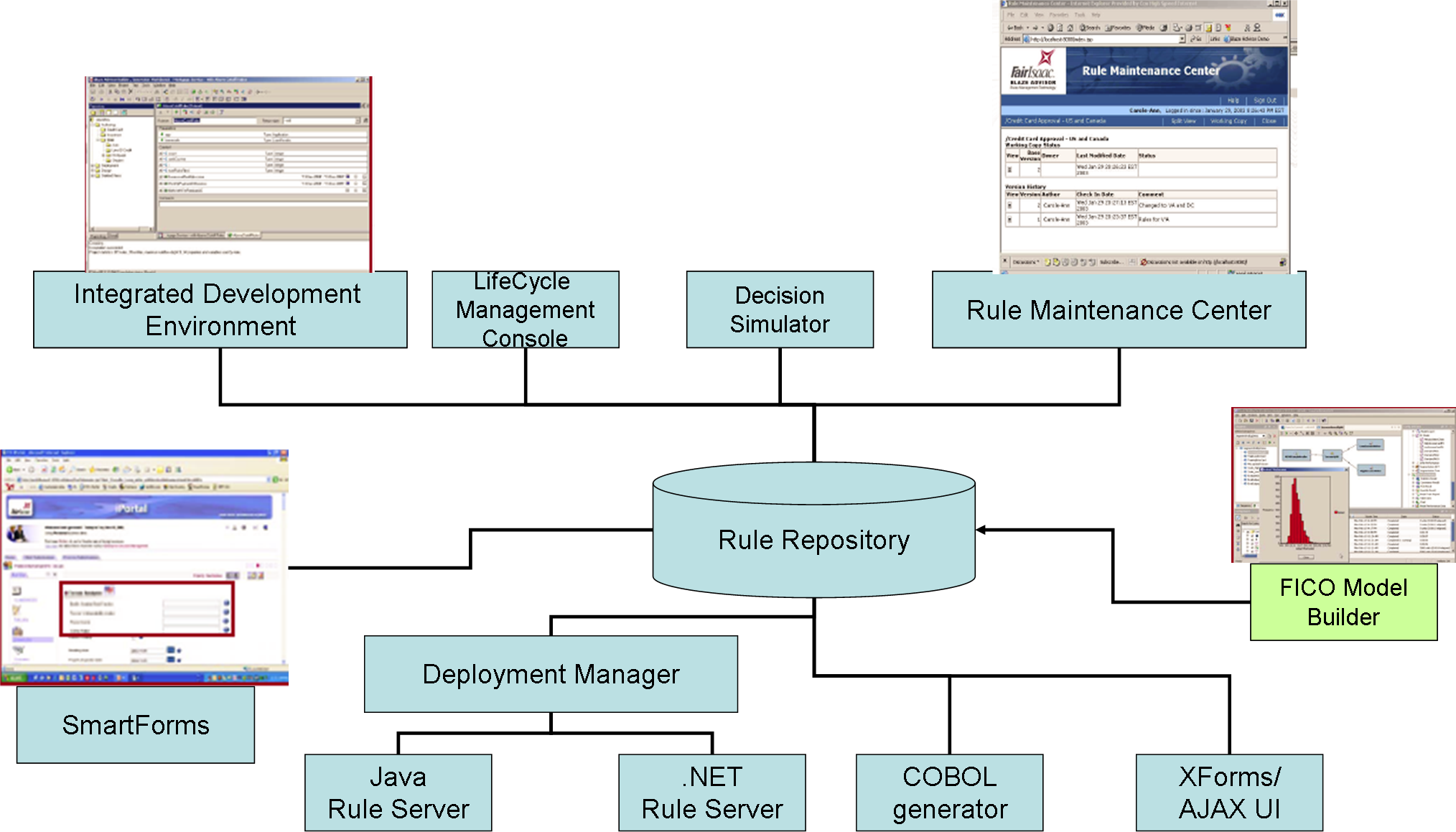Managing Rules for Business Decisions
FICO (formerly Fair Isaac Corporation) has been associated with the world of business rules and decision management since its founding in 1956. This year the company decided to rebrand under the name FICO. In Bloor’s recent review of Business Rules Management Systems, FICO was one of the two leaders based on their innovation and openness. What makes FICO a company to be reckoned with?
FICO has an appealing company vision—Transforming Business by Making Every Decision Count. I asked Carole-Ann Matignon, VP of Product Management for FICO, what this meant. She told me “Decision Management is an approach that automates, improves and connects decisions to enhance business performance. FICO offers software, services and data that can be used to automatically make discrete decisions or recommendations for action. These products and services help companies overcome elements of uncertainty that occur in large transaction volumes. They make business decisions repeatable and also provide a consistent way to associate measurable value with each decision.” She pointed out that, currently, most decisions are managed in operational silos, as organisations still maintain many separate islands of information which support disconnected business processes.
Based on conversations with their 5,000+ clients in 80 countries, FICO has identified a need for companies to connect decisions across organizational silos and customer lifecycles as a way to increase profits and improve their competitive edge. For many of these companies, decisions must be managed across geographies as well. Doing so allows them to accelerate market expansion while improving decision quality through improved analytics.
FICO sees decision management consisting of two parts: Decision Automation and Decision Improvement. Decision Automation is about operationalising an organisation’s strategies. It is used in production systems where decisions made day in and day out are automated by combining several decision technologies for greater speed and consistency. Decision Improvement is about analysing an organisation’s strategy performance to gain insights on the relative value of competing strategies and to generate new strategies that dramatically impact an organisation’s bottom-line KPIs.
Figure 1 shows the product portfolio offered by FICO.

Figure 1: FICO’s Decision Management Portfolio (Source: FICO)
Let’s now look at FICO Blaze Advisor, the BRMS product in their portfolio. Blaze Advisor has been designed with business users in mind and enables this type of user to take control of defining business rules without reference to IT. However, it still allows IT to maintain the necessary governance and control. FICO has over 18 years experience in using rules management technology. The solution was originally built over 10 years ago, with the current release being 6.8. The company has over 500 customers around the world.

Figure 2: FICO Blaze Advisor Components
In terms of support for multiple platforms, Blaze Advisor offers what I think is a better solution than separate products. It has a single development environment and rule repository, but multiple rule server runtime environments that support .NET, Java or COBOL. Thus, rule maintenance is done once, but rules can be deployed anywhere. The company has a strong commitment to standards and open technology.
Rule development can be done by business users using a number of different formats, including decision trees and tables as well as templates and scorecards. This makes Blaze Advisor very flexible. The templates are particularly good as they allow the use of business language. There is a good ability to collaborate and switch between business users and IT involvement in the development process.
The rule repository can be stored on top of Microsoft SQL Server, Oracle RDMS, IBM DB2 or Sybase. For each rule defined, there is support for effective dates and “as of” execution capability. Versioning is supported at rule level, rule set or project level and comparisons of version history are available both graphically and textually.
Blaze Advisor provides rule validation and rule verification services. The latter checks that defined rules are complete and coherent. It uses static analysis to detect redundant, missing, malformed and looping constructs used in rules or procedural logic. Rule validation is all about checking that the rules behave as was imagined, comparing actual results with expected outcomes. This is very important when you have a hierarchy of rules with dependencies between them.
The Lifecycle Management Service in Blaze Advisor provides support for operations such as filtering, releasing, and publishing projects. There is a set of APIs to allow the implementation of lifecycle management workflows. There is reference implementation which provides an illustration on how to implement a configurable lifecycle process, allowing the implementation of controls to perform lifecycle management operations. All the functions are made available through a special Lifecycle management console.
SmartForms provides support for the development of AJAX and Xforms based on the rules stored in the repository. By doing this, it ensures that collected data is valid, relevant and complete. There is support for validation rules such as required fields, trigger actions such as setting default values or invoking a web service, and what FICO calls “Dynamic Questioning”. This is the ability to branch to a different set of questions based on the answers to previous questions.
The business activity management support provided provides a framework that an organisation can use to monitor the events in their processes. Data about decisions is captured for use within Blaze Advisor. Data can be collected at the server, services, session or execution levels. The monitoring capability is all standards-based and the data can be accessed by subscribing to an event rather than coding. The introduction of the new Decision Simulator component will make good use of this captured data.
FICO has managed to do the balancing act between being an original leader in the field of business rules management whilst still being an innovator in the field. This is a hard act to maintain. During the survey Bloor looked at innovation, both from a technical viewpoint as well as from a “go-to-market” one. Under technical innovation, we were interested in two key user innovations; namely SaaS delivery and the Business User/IT collaborations components. The BRMS market in general is behind the BPMS market, but FICO are well-advanced in the ability to deliver. The Business User/IT collaboration is key to the success of BRMS usage and FICO have invested heavily in providing an exceptional seamless environment. For example, in the latest 6.8 release, FICO supports Microsoft Excel import and export for Decision Tables and exposes this functionality out-of-the-box to rules architects and business users alike. Bloor were impressed with the capabilities of the current toolset and the peek we had into the future showed how innovative the company is being.
